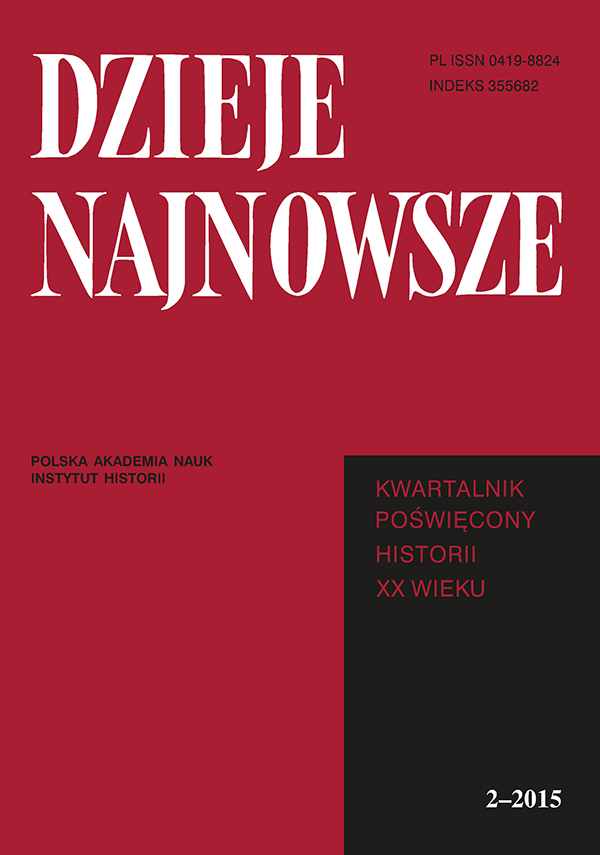Osadnictwo rolne ludności żydowskiej na Ukrainie w latach 1924–1934 (uwagi ogólne)
DOI:
https://doi.org/10.12775/DN.2015.2.03Resumen
Rural Settlements of the Jewish Population in Ukraine in 1924–1934 (General Remarks)The history of the Jewish population in Russia and, subsequently, the Soviet Union constitutes a special page in the history of that state. One of its lesser–known aspects are the rural settlements of this minority in Ukraine, a fragment of a widely conceived national integration policy devised by the Soviet state. The course of the colonisation and, upon numerous occasions, its success are best evidenced by data cited in the study and pertaining to the number of settlers, the area of Jewish farmsteads, chief crops, and animal husbandry. It appears that the newly settled Jewish population, unaccustomed to work on the land, not only intensified agriculture but gradually even paid back credits. The profitability of the farmsteads was to a considerable extent favoured not solely by a determination to adapt to difficult living conditions but also by regulations permitting the access of foreign organisations. Owing to the absence of state funds the realisation of plans made at the top was rendered possible by foreign financial assistance.
Despite the ultimate failure of the undertaking, which was to a considerable measure the outcome of the demands made by the authorities, the accomplishment of rural colonisation by this particular minority to a certain degree altered the stereotype of the Jew conceived as a trader and an exploiter, embedded in Soviet society. It also made it feasible to show, i.a. upon the example of neighbourly help often involving assorted ethnic groups, that divisions into good and bad citizens, and into industrious members of society and parasites, do not coincide with national boundaries, but possess much more complicated determinants, often shattering convenient stereotypes. A successful demonstration of the ability to cooperate and coexist with other nations within the USSR simultaneously defined the evolution of its perception within a wide social, cultural, and political context.
Descargas
Publicado
Cómo citar
Número
Sección
Stats
Number of views and downloads: 383
Number of citations: 0



